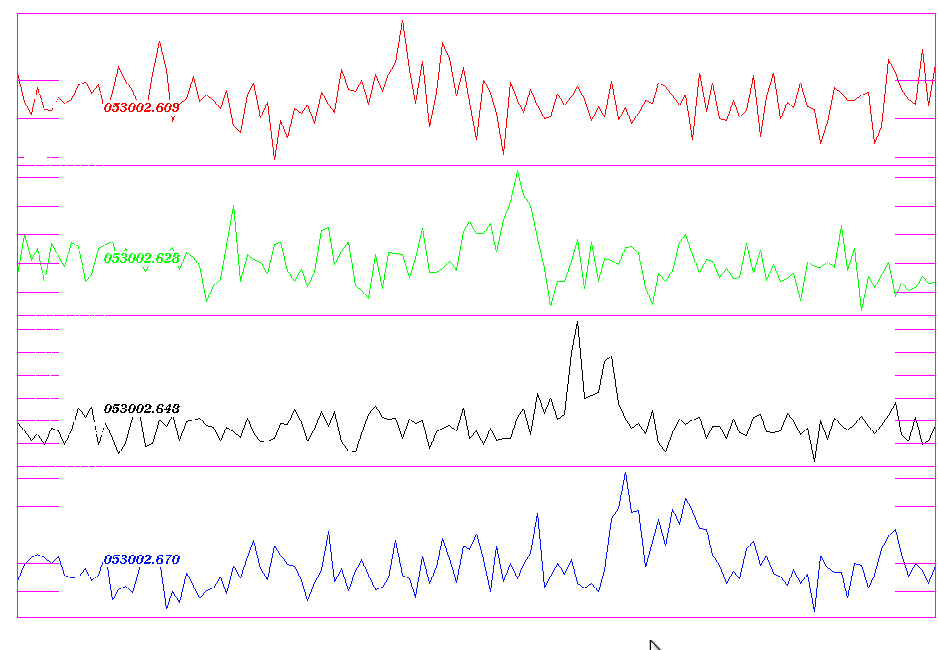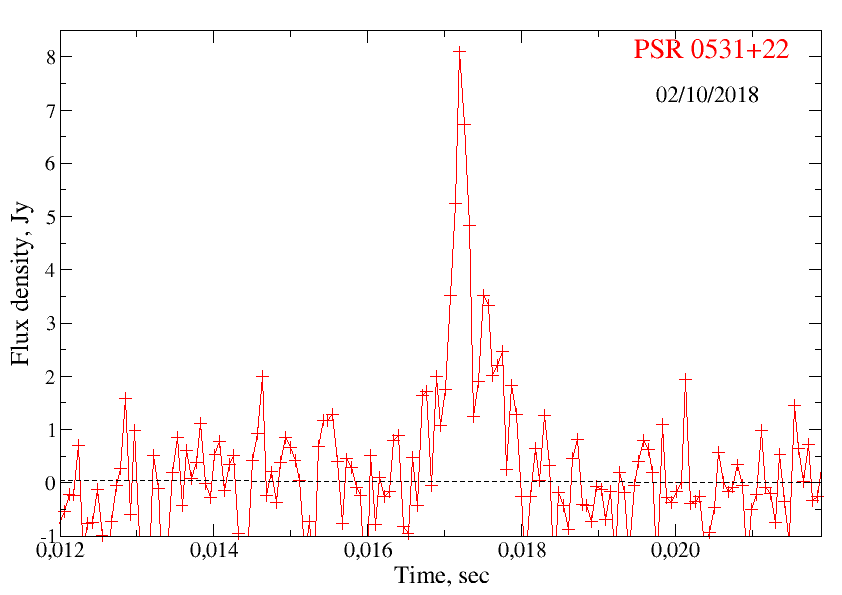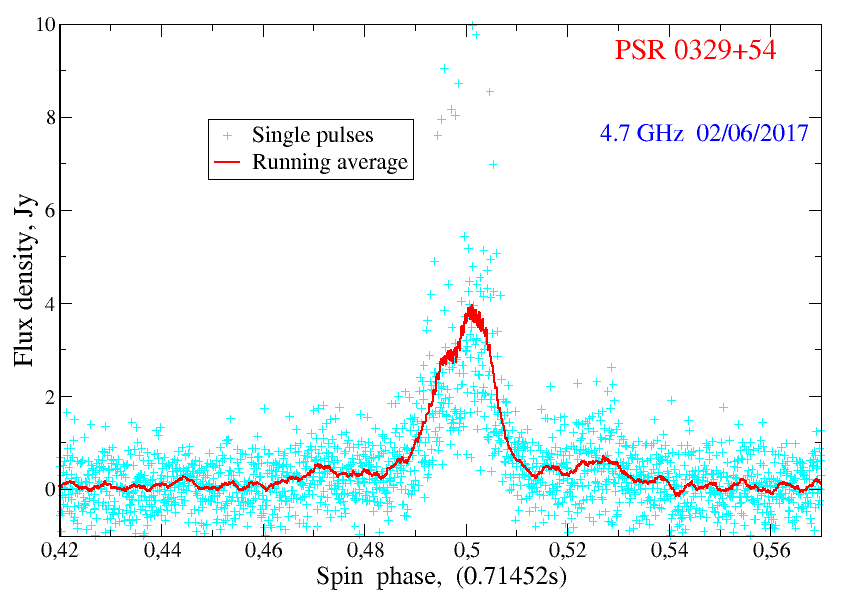

First Implementation of the Fast
Radiometry Mode at RATAN-600 for Studying Pulsar Radiation
Trushkin S. A., Tsybulev P. G., Bursov
N. N., Nizhelskij N. A.
In 2018, we
implemented the mode of fast radiometry with a discretization interval from 60
to 490 μs at the
4.7 GHz sensitive radiometer for the first time. This mode is necessary for
detecting and searching for fast radio bursts (FRB) from the characteristic
delay of the arrival time of a burst due to the interstellar and intergalactic
dispersion.

Western Sector of RATAN-600 and three beams at a frequency of 4.7 GHz
During purpose
measurements, single impulses from the nearby pulsar PSR0329+54 in the Southern
Sector and the young pulsar PSR0534+22 in the Crab Nebula in the Western Sector
of the RATAN-600 radio telescope were detected for the first time ever. In the
pilot survey of fast radio bursts in the Western Sector, we found five single
giant impulses (GI) from the 33-millisecond pulsar PSR0534+22 in the Crab
Nebula at a 3-beam 4-channel complex in the frequency band 4.2–4.8 GHz. On June
30, 2018, the flow of GIs (~1 ms)
exceeded 150 Jy, while the average impulse flows are
below 10 mJy. From the time shift of the impulse
arrival, the dispersion was measured: DM = 57±1 pc/cm3 which is in
good agreement with previous measurements. 

(a) Actual recording (8 ms) of the passage of a giant impulse in the Crab
with an impulse-arrival delay with the increased wavelength. (b) Giant impulse
in the full frequency band.
The GI found in the observations on October 2, 2018
consisted of two sub-impulses with a flow of about 8 and 4 Jy
and a duration of 300 µs separated by 400 µs.
Dependence between the arrival time of four giant impulses
and the frequency in comparison with the calculated dependence for the known
dispersion.
It follows
that the area of impulse radiation has a size of about 100 km, and its
brightness temperature exceeds 1025 K. It
was planned to use the fast radiometry mode in the “source-tracking” mode
behind the source for 100–200 s which will allow us to determine the average
flows and impulse profiles of pulsars at 4.7 GHz. On the other hand, the search
for single impulses subject to cosmic dispersion—fast radio bursts—continues on
the newly created antenna-radiometric complex.

Average impulse profiles of the pulsar PSR0329+54 at 2.3 and 4.7 GHz as
observed in June 2017.
Contact person: Trushkin S.A., Head of Radio Astrophysics Laboratory, SAO
RAS.